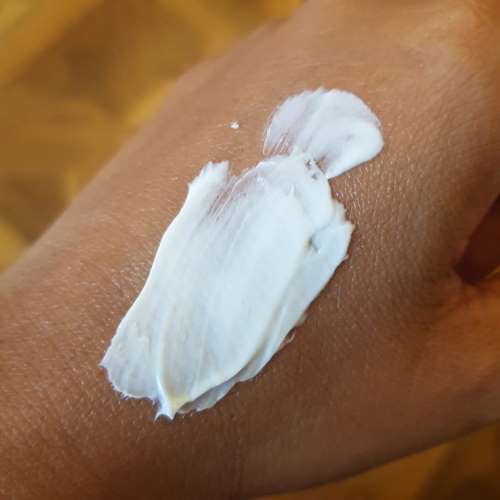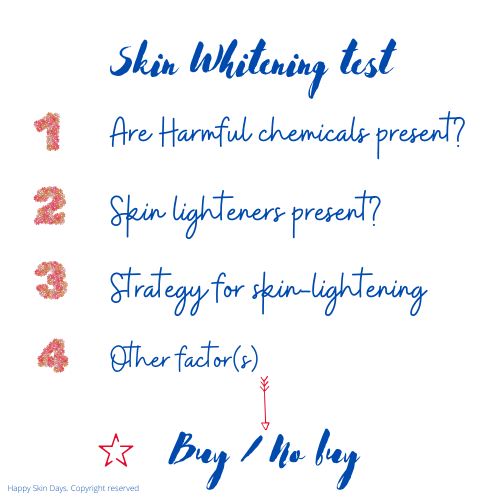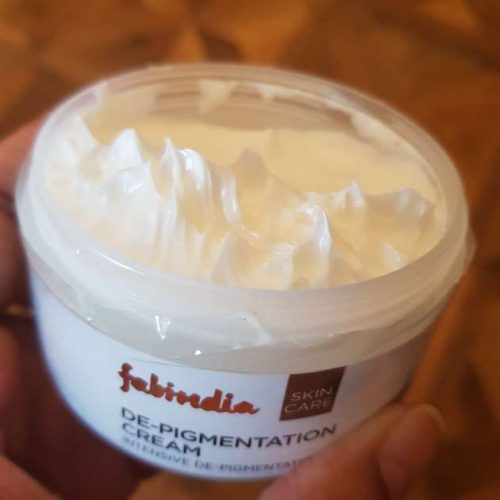Evidently, if you have never heard of Fabindia, then you need to come out of that rock. Here is a link to this ubiquitous Made in India brand.
Whenever you see the words “detan”, “de-pigmentation” etc, these are marketing blurb substitutes for skin-lightening products. You may think I should not review skin whitening products (let’s call a spade, a spade) and you’d be wrong. The self-loathing Indian women feel towards our skin colour is a deeply cultural issue that is etched into our psyche.
It is shameful that we hate our skin colour and that others around us, especially family, persistently judge us and other women on the tone of their skin colour.
But that doesn’t mean I give anyone permission to stop me from doing my work. Today my work is reviewing this product.
Texture of the cream and appearance
This is a very heavy textured cream and smells synthetic: a bit like Forest Essentials’ Vitamin E body cream, but lighter. The texture feels like Nivea, but marginally lighter. I would not use this as a day cream simply on the basis of the closed, heavy nature of the texture.

Happy Skin Days skin-lightening test
In deciding whether or not to use a product, I apply this very basic test:

Ingredient label

1) Are Harmful chemicals present?
Yes. This product contains Benzophenone-3 (Oxybenzone) and Parabens (methyl- and propyl-).
Benzophenone-3 or Oxybenzone. Oxybenzone is an endocrine disruptor and high levels of it have been linked with: girls with LOWER weights at birth and boys with larger heads. It is also a skin allergen. (See also: Chemicals to Avoid Benzophenone-3).
I am not a fan of parabens either (see Chemicals to Avoid – Parabens) and therefore, I would not use this product.
I respect your right to use this product and will continue with my review.
2) Skin lighteners present
The product has two powerful skin lighteners: kojic acid and arbutin (10th ingredient).
2a) About Arbutin
There are two forms of Arbutin, and the more potent form is Alpha Arbutin, which is an extremely strong skin lightener.
The safety concerns around Arbutin stem from the fact that it is a derivative of Hydroquinone and in dark-skinned individuals Hydroquinone causes ochronosis (photos at the bottom of this blog).
Even though Hydroquinone is banned in the EU, Arbutin (albeit a derivative of it) is not. Arbutin hydrolyses to Hydroquinone and therefore may result in orchonosis.
For this reason, the EU places limits on Arbutin: 2% in face creams for Alpha Arbutin and 7% in face creams for Beta Arbutin.
There are no such limitations in India, but I am less concerned because this is the 10th ingredient on the ingredient label – as the 10th ingredient, there frankly is not going to be a whole load of Arbutin in this product…
2b) Kojic Acid Dipalmitate
Kojic Acid is a skin lightener and in fact, this expired US patent refers to it as a skin whitening cosmetic ingredient. KAD is the 8th ingredient in this product.
I have no doubt that this is an effective skin lightener – it may be better than straight kojic acid (from which it is derived from) but potentially without the side effects of KA. Kojic acid may cause contact dermatitis and contact allergy.
You can read more at this blog
3) Products strategy for skin-lightening
The product achieves skin lightening on two levels.
First, by the effect of sunscreen filters and then the present skin lighteners: kojic acid dipalmitate and arbutin.
Sunscreen filters present in the product are Octyl Methoxycinnamate (4th ingredient) and Benzophenone-3 (11th ingredient_
Sunscreen filters: One of the immediate body responses to over-exposure to UV radiation is that our body produces more melanin.
(Melanin is the pigment that is primarily responsible for our skin colour (see also What gives our skin its colour?))
More melanin results in tanning and darkening of skin complexion. The purpose of the sunscreen ingredients is to prevent this cascade of events caused by UVR exposure.
Essentially, less melanin means reduced tanning /darkening of skin complexion.
The skin lighteners present prevent more melanin from reaching the surface of the skin, thereby giving the appearance of lighter skin.
Would I buy this product again?
No, it contains a bunch of harmful chemicals. But if you are fine with it, then this is a skin lightening cream that you could consider buying. Its available for sale online at FabIndia for INR 475 for 100ml.
Other points to note
If you do plan use to use this product, please absolutely use a separate sunscreen product with at least an SPF 30, and that protects your skin against both UVA and UVB.
After about 4 weeks, you may not see any difference in your complexion, despite continuous use of this product. Studies with another popular skin lightener, Niacinamide, indicates that the impact of topical treatment plateaus at about 4 weeks and this may apply to this product as well….if you find this to be your experience, please do write to me at email@happyskindays.com
***
Exogenous ochronosis hydroquinone induced

***
HAPPY SKIN DAYS. COPYRIGHT RESERVED 2021. I am a non-affiliated skincare blogger. I invest my own resources in researching and creating content for my blog. The contents of this blog, including images are protected by copyright law(s). My content cannot be replicated without my consent. You can write to me at email@happyskindays.com. I will file criminal and civil charges for copyright infringement.
